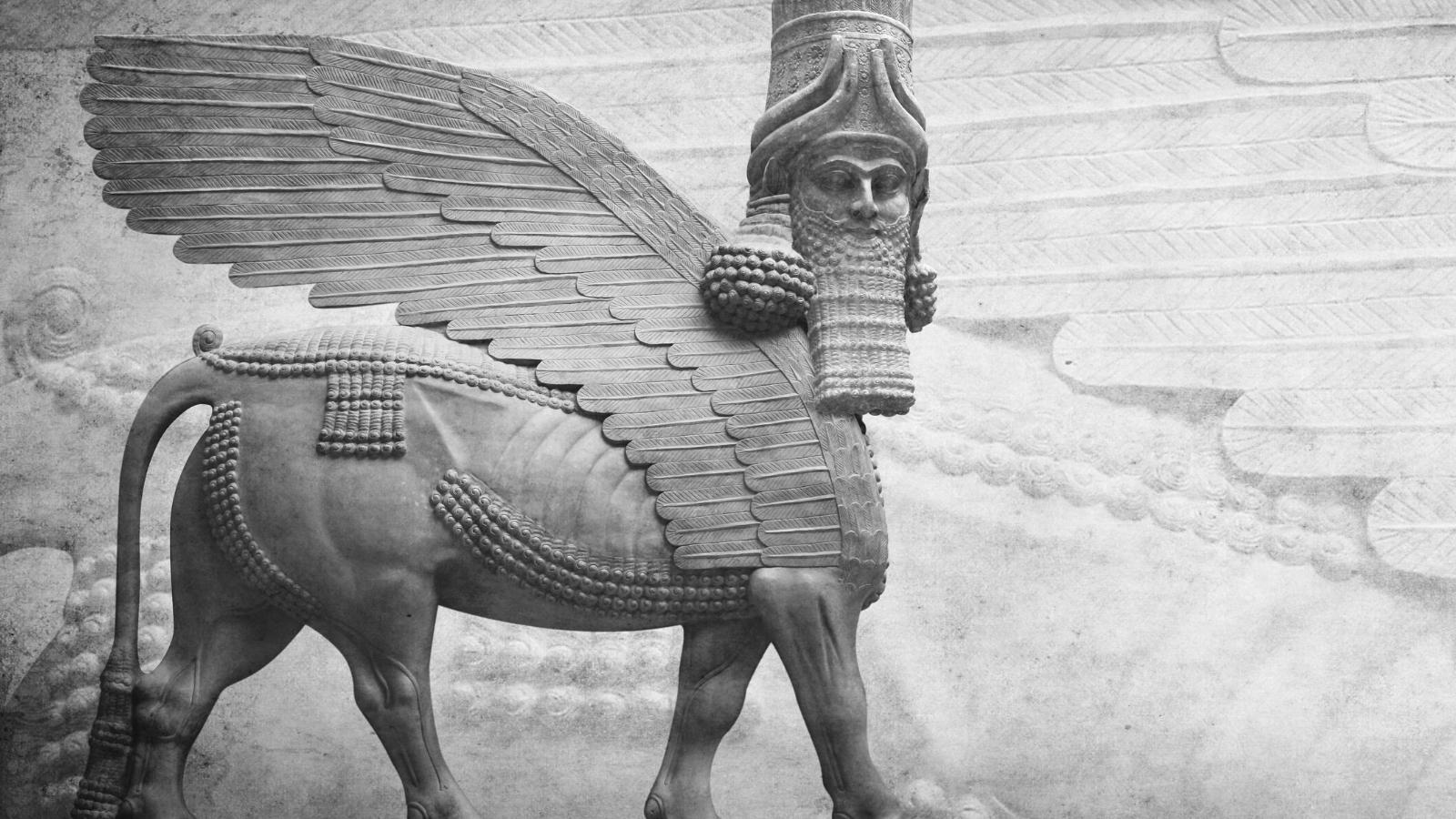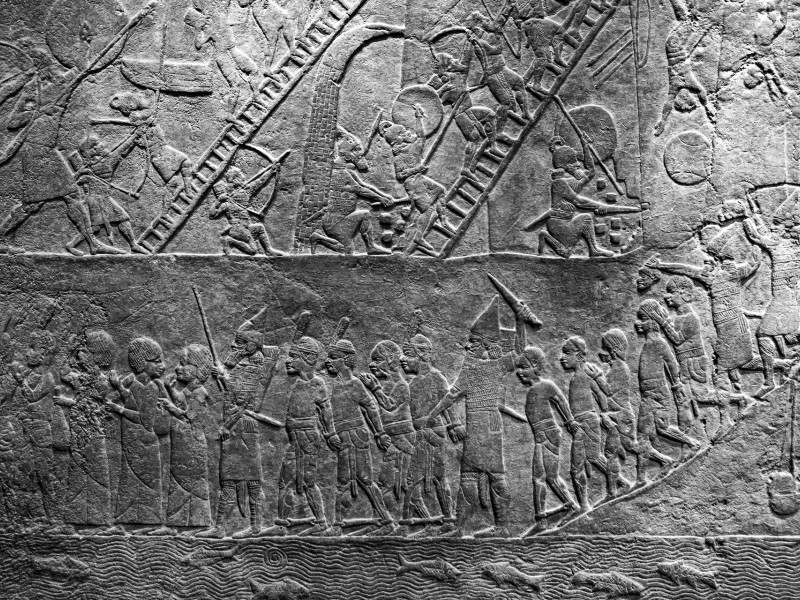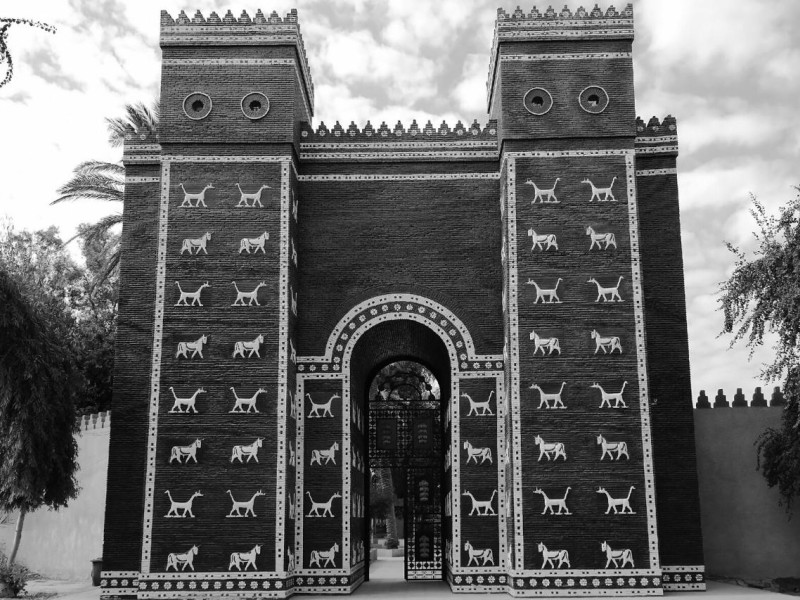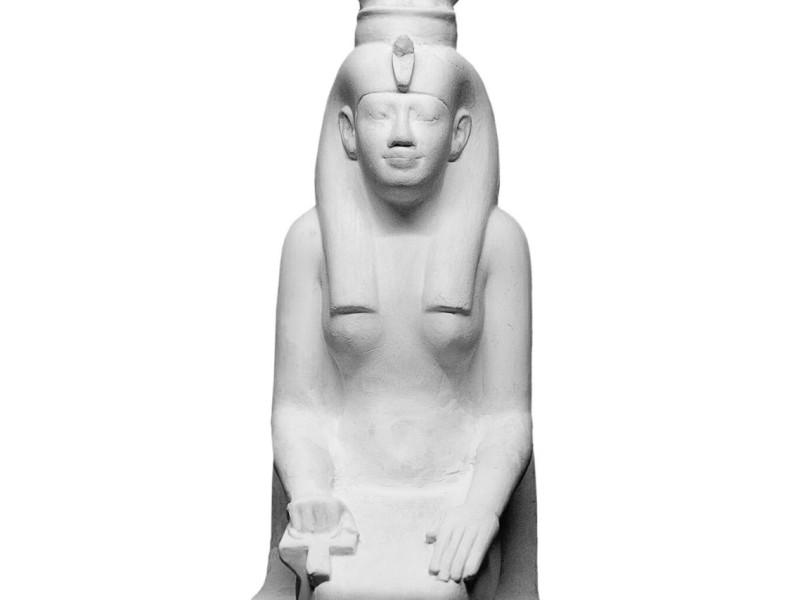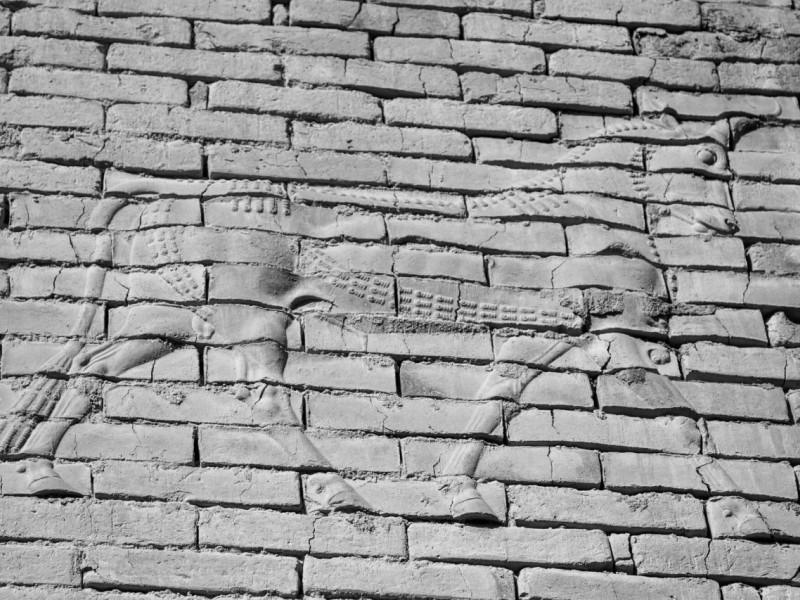Lamassu: The Ancient Mesopotamian Human-headed Winged Bull Goddess
Lamassu, also known as Lama or Lamma, is an ancient Mesopotamian goddess. This protective deity was usually considered female but was occasionally portrayed as male. She was a hybrid deity and thus had the head of a human, the body of a bull or sometimes a lion, and wings.
Read this article to find out the importance of this Mesopotamian goddess and how she became a hybrid to the Assyrians.
Who Is Lamassu?
Lamassu is the protective hybrid goddess from the Assyrian era of Ancient Mesopotamia. She is most often known as a goddess and goes by the other names Lama or Lamma, but she does have a male counterpart, the lesser-known version of this deity named Shedu. Lamassu was like a mediating goddess between the other deities.
A figure of this goddess was unearthed at Uruk in Mesopotamia, and she was labeled as Lamma. Other figures were also discovered having similar features such as wearing a ruffled dress, having a horned tiara, and arms raised up to the sky. This goddess emerged during the earlier Sumerian period, but in later Assyrian times, she became a hybrid goddess.
This period was when she emerged as the half-human, half-animal goddess. Sometimes Lamassu is used to describe multiple deities or spirits and in later times, she became a motif and symbol of power as well as protection. Lamassu also represented the zodiac, stars, and constellations.
Lamassu, a Full Description of the Assyrian Winged Lion
Lamassu became a hybrid goddess in Assyrian times and was turned into a sort of humanoid bull. This empire lasted from between 900 to 600 BC in Mesopotamia, and in this time period, she developed into a goddess with a human head, the body of a bull or a lion, a bird’s wings, and sometimes with five legs. The first image of this hybrid deity emerged during the reign of the King of Assyria Tiglath-Pileser II.
This type of image, the human-headed winged bull, was not unheard of in the Near East, and it was quite popular. In Assyrian Lamassu sculptures, these creatures were often placed as two sculptures in front of courtyards or palaces. They would face the street, showcasing their power. From the front, it looked like they were standing, but from the side, it looked like they were walking.
They also sometimes appeared inside palaces, but they were smaller figures, always present to protect those within them. Sometimes, palaces had more than two figures of Lamassu at the entrance, which would also be accompanied by lions or a hero capturing a lion.
The Mythology of Lamassu, the Mesopotamian Hybrid Goddess
Lamassu was a deified figure in much of Mesopotamian religion. In addition to her other animal body parts, she might also have had the horns or the ears of a bull.
Lamassu and Lamassu gods were originally thought of as protective deities for the common Assyrian people. It was only later that they turned into the protective gods of the palaces and the upper classes.
Not only would they appear at the entrance to palaces, but they might also be placed at the entrance to cities. They would be of huge size, showcasing their power and their ability to protect those within. To protect houses, the figure of Lamassu was carved into clay tablets, which were buried under the ground in front of the door.
Lamassu, the Assyrian Bull, in Artwork
This goddess can be seen in many examples of Mesopotamian artwork as well as Mesopotamian ancient locations.
These include:
The palace of Sargon II in Dur-Sharrukin
Cylinder seals: these were used to roll impressions onto clay
Gate of All Nations in Iran
The Louvre in Paris
Met in New York
And more
The Destruction of the Lamassu of Nineveh by ISIS in 2015
Sadly, one bit of Lamassu artwork was destroyed by the Islamic State in 2015. This particular image is in Nineveh in Iraq, and while other areas around it were attacked by bombs, the face of Lamassu was destroyed by a drill. It was done on purpose as a way to show their conquering of the area, going as far as to bore the eyes out of Lamassu, making a statement.
This action is similar to ancient times, when they believed a conquest wasn’t complete until the nation’s artwork was defaced. Fortunately, all was not lost because someone wanted to bring this Lamassu back to life. An American professor named Michael Rakowitz was commissioned to recreate this Lamassu sculpture, and it is now displayed in Trafalgar Square in London.
This replica was made with 10,000 Iraqi date syrup cans and serves as a symbol of bright colors in the dark, gray area of London. The project is called “The Invisible Enemy Should Not Exist,” and Michael Rakowitz’s goal extended to replicating many of the other objects that were destroyed during the ISIS invasion.
Lamassu in Pop Culture
Lamassu was so popular in Mesopotamia that the icon grew and expanded. This goddess lingers even today in pop culture.
Her symbol appears in several places:
The British 10th army, which was in operation in the 1940s in Iraq and Iran, used Lamassu as their symbol
Even now, Lamassu is on the logo of the US Armed Forces – Iraq
Lamassu appears in “The Lion, the Witch, and the Wardrobe” as one of the animalistic characters who appears at the Stone Table
A figure of a Lamassu is in “Aladdin” after Aladdin and Abu enter the cave of wonders
She also appears in the movie “Alexander” at the Ishtar Gate in Babylon
Lamassu makes an appearance in the game “Dungeons & Dragons”
She is also integrated in the trading card game “Magic: The Gathering”
Lamassu shows up in the “Fablehaven” series
Frequently Asked Questions About Lamassu
What is the Lamassu made of?: Many of the statues of Lamassu were made of white limestone
What is the plural of Lamassu?: The plural of Lamassu is Lamassi
How does the Lamassu present power?: It represents power with its hybrid appearance of both human and animal. The fact that it stands sentry in front of entrance points of important buildings shows its magnificent power too
Why does the Lamassu have a human head?: It was not unheard of in this time period for these types of figures to have human heads
Conclusion
Take a look at what we learned about Lamassu in the article above:
Lamassu or Lama/Lamma was a Mesopotamian goddess
She was often shown as female, but as time went on, she was occasionally portrayed as male or even genderless
Sometimes, her name is used to describe many spirits/deities
Her male counterpart is called Shedu
She first emerged during the Sumerian period, but later during Assyrian times, she became a hybrid god/goddess, half-animal and half-human
Lamassu was considered a protective figure, and as time went on, various artwork showed just how valued she was as a protector
She was also considered to be a mediating deity between the other gods and was known to represent the zodiac and the constellations
Scholars gave her the name Lamassu because a statue of her was unearthed in Uruk in Mesopotamia, and this goddess was called Lamma
Other similar figures that are believed to be her were unearthed over time. They all had similar features: a ruffled dress, a horned tiara, and arms raised up to the sky
During the Assyrian period, new images of the goddess emerged, depicting her with five legs, bird’s wings, a human head, and the body of a bull or a lion
This idea of a hybrid deity was a very common image in the Near East
It was very popular especially during the Assyrian period. During that time, statues of Lamassu were seen at entrances to important buildings, one on either side of the entrance to palaces and even homes
Sometimes, people would draw Lamassu on clay tablets and bury them at the threshold of their doors to protect their houses
These images can be seen in many places, and artwork of her is found today in many museums around the world
Sadly, in 2015, the huge Lamassu statue in Nineveh, Iraq, was destroyed by ISIS
They bored out her eyes with a drill to show that they have conquered the area
As a way of “retaliation,” a professor from the US remade the sculpture with Iraqi date syrup cans, and it is now displayed in Trafalgar Square
Lamassu appears in “Dungeons & Dragons,” “The Lion, the Witch, & The Wardrobe,” “Aladdin,” and is the symbol of the logo of the US Armed Forces – Iraq
Lamassu was a powerful and protective deity in ancient Mesopotamian religion, who showcased her power in the combination of human and animal qualities, making her strong and fearsome.
She was considered powerful enough to protect those within the buildings she guarded, but she also shows her power in having spread so far and wide across the world. Even after being destroyed by people in the land she inhabited, her power lives on as she has come back to life in a new way and a new place.


